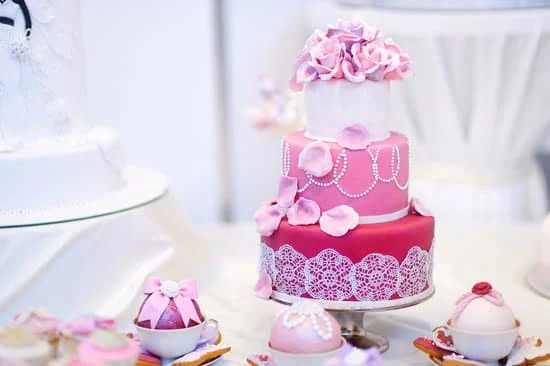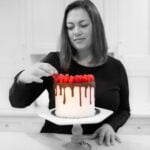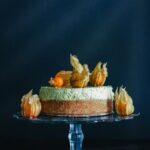Looking to learn how to make a cake with fondant decorations? Fondant is a versatile and popular choice for decorating cakes, offering a smooth and polished finish that allows for intricate designs. In this article, we’ll explore the process of creating stunning fondant-decorated cakes, from preparing the fondant to adding the final details.
Fondant, a pliable icing that can be rolled out and shaped, has been used in cake decorating for centuries. It provides a blank canvas for adding decorative elements such as flowers, ribbons, and figurines. Whether you’re a beginner or an experienced baker, working with fondant offers endless creative possibilities.
In this section, we’ll delve into the basics of working with fondant and its significance in cake decoration. From understanding what fondant is to exploring its historical roots in cake making, readers will gain insight into the art of using fondant to elevate their cake creations.
Choosing the Right Cake Base
When it comes to creating a cake with fondant decorations, one of the most crucial decisions you’ll make is choosing the right cake base. The type of cake you use will impact not only the flavor but also how well it holds up under the weight of the fondant and decorative elements.
First, consider the texture of the cake. A dense and sturdy cake, such as a classic vanilla or chocolate pound cake, works best for supporting fondant decorations. Lighter and airy cakes like angel food or chiffon may not be sturdy enough to support the weight of fondant. Additionally, a moist cake will help the fondant adhere better and maintain its freshness.
Flavor is also an important factor to consider. While chocolate and vanilla are popular choices for a fondant-covered cake, any flavor can work as long as it complements the rest of your design. Keep in mind that certain flavors, such as citrus or fruit-based cakes, may require extra care when adding fondant due to their moisture content.
Finally, don’t forget about any dietary restrictions or preferences your guests may have when selecting a cake base. Whether it’s gluten-free, dairy-free, or vegan options, there are plenty of recipes available for alternative cakes that are suitable for decorating with fondant.
To ensure success in making a cake with fondant decorations, taking these considerations into account will set you on the right path towards creating a stunning and delicious work of art.
| Considerations | Details |
|---|---|
| Texture | A dense and sturdy cake works best for supporting fondant decorations. |
| Flavor | Select a flavor that complements your design and is appropriate for adding fondant. |
| Dietary Restrictions | Be mindful of any potential dietary restrictions or preferences among your guests. |
Preparing the Fondant
Fondant is a versatile and popular choice for decorating cakes due to its smooth and polished finish. While it may seem intimidating to work with, preparing fondant for cake decorating is actually quite manageable with the right techniques. In this section, we will explore step-by-step instructions on how to prepare fondant for cake decorating, as well as techniques for coloring and rolling out the fondant.
Step-by-Step Instructions
To prepare fondant for cake decorating, start by kneading the fondant until it becomes pliable and easy to work with. This step helps to warm up the fondant and make it more flexible. Once the fondant is ready, dust your work surface with powdered sugar or cornstarch to prevent sticking. Use a rolling pin to roll out the fondant into a thin, even layer of your desired thickness.
Techniques for Coloring and Rolling Out
Coloring fondant can be done using gel food coloring, which provides vibrant hues without altering the consistency of the fondant. Add small amounts of gel food coloring at a time and knead thoroughly until you achieve the desired color. When rolling out the colored fondant, use powdered sugar or cornstarch to prevent sticking and carefully transfer it onto your cake once it reaches the desired thickness.
By following these techniques for preparing fondant and coloring it, you can ensure that your cake will have a smooth finished appearance with beautifully decorated elements using fondant.
Remember that in order to create stunning decorative elements on your cakes, taking your time through this first crucial steps are necessary.
Creating Fondant Decorations
When it comes to creating fondant decorations for cakes, the possibilities are endless. From simple flowers to intricate patterns and designs, fondant allows for a wide range of creative expression in cake decorating. The process of making fondant decorations involves shaping and molding the fondant into various elements that can be used to adorn a cake.
To start, you will need to gather all the necessary tools and materials, including different colors of fondant, rolling pins, cutters, and shaping tools. Once you have everything ready, you can begin by kneading the fondant to make it pliable and easy to work with. Then, depending on the design or decoration you want to create, you can use different techniques such as cutting, shaping, and molding the fondant to bring your vision to life.
One popular technique for creating fondant decorations is using silicone molds. These molds come in a variety of shapes and designs, making it easier to achieve intricate details with minimal effort. Additionally, using edible food coloring or edible dust can add depth and dimension to your fondant decorations, enhancing their visual appeal.
| Tools & Materials | Description |
|---|---|
| Fondant (in various colors) | Essential for creating decorations |
| Rolling pin | For rolling out the fondant |
| Cutters & Shaping Tools | For cutting and shaping the fondant |
| Silicone Molds | For creating intricate designs with ease |
By following these steps and utilizing the right tools and techniques, anyone can learn how to make a cake with fondant decorations that are professional-looking and visually stunning. Whether you’re a beginner or an experienced baker, working with fondant provides a fun and rewarding experience in cake decorating.
Applying Fondant to the Cake
When it comes to applying fondant to a cake, there are some key techniques and methods that can ensure a smooth and professional-looking finish. One of the first steps in this process is to make sure that your cake is properly prepared. It should be level and free from any crumbs or rough edges. This will provide a clean canvas for the fondant to adhere to.
Once your cake is ready, it’s time to roll out the fondant. Dust a clean surface with powdered sugar or cornstarch to prevent sticking, then use a rolling pin to flatten the fondant into a thin, even sheet. The size of the sheet should be slightly larger than the dimensions of your cake, allowing for ample coverage.
Next, carefully lift the rolled fondant and drape it over the cake. Use your hands to smooth out any air bubbles and gently press the fondant against the sides of the cake, working from the top down. Trim away any excess fondant using a sharp knife or pizza cutter, leaving a clean edge at the base of the cake.
It’s important to work quickly but methodically when applying fondant to a cake, as it can dry out and become less pliable over time. If you encounter any tears or imperfections in the fondant, they can often be smoothed out with gentle pressure from your fingertips or a tool specifically designed for this purpose.
By following these steps and tips for applying fondant to a cake, you can achieve a flawless finish that provides an elegant backdrop for your decorative elements. With practice and patience, you’ll be able to create stunning cakes that are sure to impress any audience.
Whether you’re new to cake decorating or have some experience under your belt, understanding how to apply fondant properly is crucial for achieving professional results. With the right guidance and techniques, you can elevate your cakes from ordinary to extraordinary with beautiful fondant decorations.
Adding Details and Finishing Touches
Once the fondant decorations have been applied to the cake, it’s time to add those final little details that will really make your cake stand out. Whether you’re creating a simple design or an intricate masterpiece, there are various techniques you can use to embellish your fondant decorations and achieve a polished look.
Using Piping and Edible Markers
One way to add detail to fondant decorations is by using piping with royal icing or buttercream. Piping allows you to create delicate lines, tiny dots, and intricate designs that can enhance the overall appearance of your cake. Additionally, edible markers are great for adding small details and writing personalized messages directly onto the fondant.
To achieve a smooth and polished look on your fondant decorations, you can use a polishing tool or a ball tool to gently smooth out any imperfections. This will give your decorations a professional finish and eliminate any unwanted creases or bumps.
Applying Edible Glitter and Luster Dust
For a touch of sparkle and shimmer, consider using edible glitter or luster dust to add some extra flair to your fondant decorations. These products come in various colors and can be brushed onto the surface of your decorations for a beautiful, eye-catching effect.
It’s important to take your time and pay attention to each detail as you add these finishing touches to your fondant-decorated cake. With careful precision and creativity, you can turn a plain cake into a work of art that will leave a lasting impression on everyone who sees it.
Tips for Storage and Preservation
Once you have successfully decorated a cake with fondant, it is important to know how to properly store and preserve it to maintain its freshness and appearance. Here are some tips for storage and preservation of fondant-decorated cakes:
- Keep the cake in a cool, dry place: It is essential to store fondant-decorated cakes in a cool environment away from direct sunlight or heat sources. This will prevent the fondant from melting or becoming too soft.
- Use an airtight container: To protect the cake from exposure to air and humidity, place it in an airtight container. This will help maintain the texture of the fondant and prevent it from drying out.
- Refrigerate when necessary: If your cake has perishable fillings or frosting, it is advisable to refrigerate it. However, be sure to remove the cake from the refrigerator at least an hour before serving to allow it to come to room temperature and prevent condensation on the fondant.
Proper storage and preservation of fondant-decorated cakes can ensure that they stay fresh and visually appealing for longer periods of time, allowing you to enjoy your beautifully crafted creation.
In addition to storing the entire cake, you may also want to preserve any leftover fondant decorations for future use. Here’s how you can do that:
- Wrap them tightly: After carefully removing the decorations from the cake, wrap them in plastic wrap or seal them in an airtight container to prevent air exposure.
- Store in a cool, dark place: Place the wrapped decorations in a cool, dark area such as a pantry or cupboard. Avoid storing them near any sources of heat or moisture.
- Avoid freezing if possible: While freezing fondant decorations is possible, it is not recommended as this can affect their texture and appearance. It is best to try using them within a reasonable period of time.
By following these tips for storage and preservation, you can prolong the life of your fondant-decorated cakes and keep your intricately crafted decorations intact for future use.
Troubleshooting and Common Mistakes
When making a cake with fondant decorations, it is important to be aware of common issues that may arise during the decorating process. From handling the fondant to applying it onto the cake, various challenges can occur that may affect the final outcome. This section will provide helpful tips on how to troubleshoot these issues and avoid common mistakes when working with fondant.
One common problem when working with fondant is air bubbles forming underneath the surface of the decoration. To prevent this, it is essential to roll out the fondant evenly and smoothly before applying it to the cake. If air bubbles do appear, gently prick them with a pin and smooth out the area with your fingers. Another way to minimize air bubbles is to lightly dust the work surface with cornstarch or powdered sugar while rolling out the fondant.
Another issue that often arises is cracking or tearing of the fondant when covering a cake. This can be caused by rolling the fondant too thin or stretching it too much during application. To avoid this, make sure to roll out the fondant to an even thickness and use a rolling pin to carefully lift and drape it over the cake. If tearing does occur, gently press the edges together or use a small amount of water as adhesive.
Additionally, color fading or bleeding can occur when using colored fondant decorations on a cake. To prevent this, allow colored decorations to dry completely before placing them on the cake. It is also important to store any leftover colored fondant in an airtight container away from direct sunlight to maintain its vibrant colors.
By being mindful of these common issues and implementing these troubleshooting tips, you can ensure that your fondant-decorated cakes turn out beautifully and professional-looking. With practice and attention to detail, you can confidently create stunning cakes adorned with intricate fondant decorations.
Conclusion and Final Tips
When learning how to make a cake with fondant decorations, it’s important to remember that practice makes perfect. Working with fondant can be a fun and rewarding experience, but it also requires patience and precision. Here are some final tips to keep in mind as you embark on your fondant cake decorating journey:
1. Take your time: Fondant work is delicate and requires careful attention to detail. Rushing through the process can lead to mistakes and frustration. Allow yourself plenty of time to work on your cake decorations, especially if you’re trying out new techniques or intricate designs.
2. Use quality tools: Investing in good quality fondant tools can make a world of difference in your cake decorating endeavors. From rolling pins and cutters to shaping tools and mats, having the right equipment can help you achieve professional-looking results.
3. Get creative: Don’t be afraid to experiment with different shapes, colors, and textures when creating fondant decorations for your cakes. Whether you’re making flowers, figures, or geometric patterns, let your creativity shine through in your designs.
4. Practice proper storage: Once you’ve decorated your cake with fondant decorations, it’s important to store it correctly to maintain its freshness and appearance. Keep the cake in a cool, dry place away from direct sunlight or heat sources.
By following these final tips and incorporating the techniques outlined in this guide on how to make a cake with fondant decorations, you’ll be well on your way to creating beautiful and impressive cakes that are sure to wow your friends and family.
Additional Resources and References
In conclusion, creating a cake with fondant decorations can be a fun and rewarding experience for both amateur and experienced bakers. Fondant offers a versatile and professional-looking way to decorate cakes for any occasion, from birthdays to weddings. By following the tips and techniques outlined in this guide, you can learn how to make a cake with fondant decorations that will impress your friends and family.
When it comes to choosing the right cake base, it’s important to consider the flavor and texture of the cake to complement the fondant decorations. Preparing the fondant involves careful attention to coloring and rolling out the fondant, as well as shaping it into various decorative elements.
Properly applying fondant to the cake is crucial, along with adding details and finishing touches for a polished result. Storing and preserving fondant-decorated cakes is also key in maintaining their freshness and appearance.
In addition to the information provided in this article, there are countless resources available online and in books for further learning and inspiration on how to make a cake with fondant decorations. Remember that practice makes perfect when working with fondant, so don’t be discouraged by any mistakes along the way. With dedication and creativity, you can create stunning fondant-decorated cakes that will leave a lasting impression at any event.
Frequently Asked Questions
How Do You Put Fondant Decorations on a Cake?
Fondant decorations can be put on a cake by first preparing the fondant, rolling it out, and cutting it into the desired shapes using cutters or molds. Then gently placing them onto the cake with a light touch.
Can You Put Fondant Directly on a Cake?
Yes, you can put fondant directly on a cake. It’s important to ensure that the cake is cool and smooth before placing the fondant on top. Some people use a thin layer of buttercream frosting as an adhesive for the fondant.
Can You Put a Cake With Fondant Decorations in the Fridge?
It is generally safe to put a cake with fondant decorations in the fridge, but it’s important to do so carefully. The cake should be covered to prevent any condensation from forming on the fondant, which could ruin its texture and appearance.
Additionally, it should be brought back to room temperature before serving to avoid any sweating or damage to the decorations.

Welcome to our cake decorating blog! My name is Destiny Flores, and I am the proud owner of a cake decorating business named Cake Karma. Our mission is to provide delicious, beautiful cakes for all occasions. We specialize in creating custom cakes that are tailored specifically to each customer’s individual needs and tastes.





